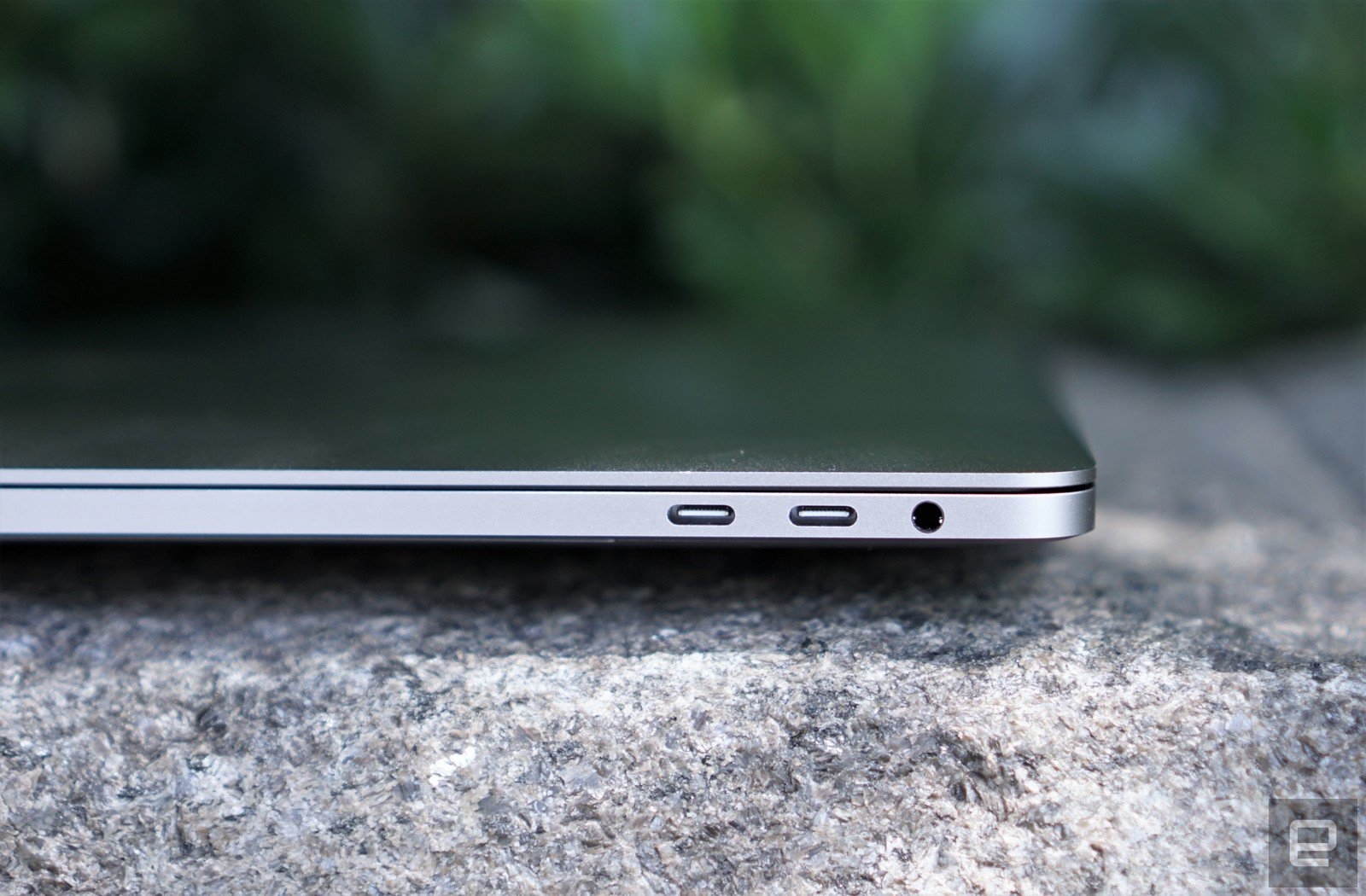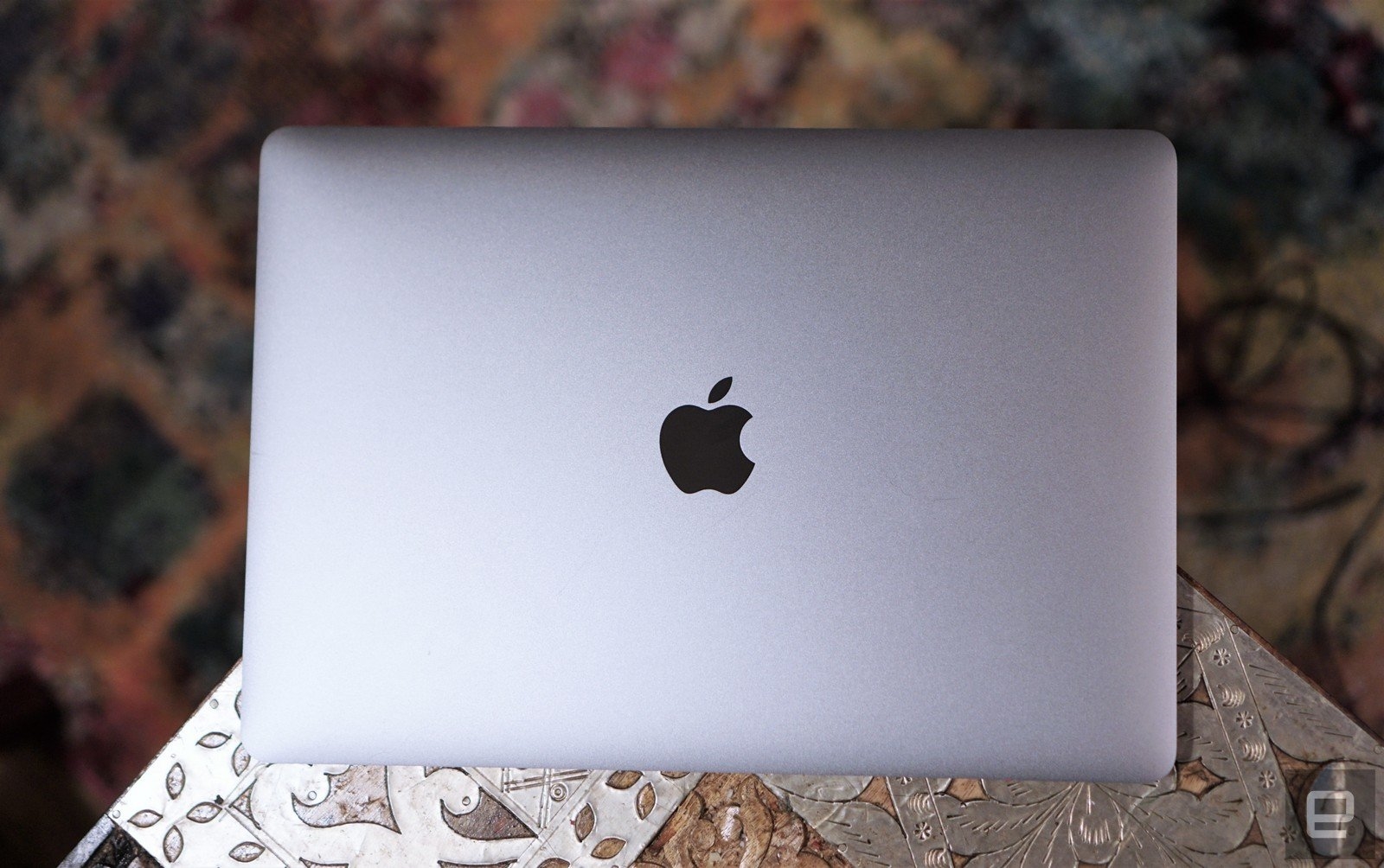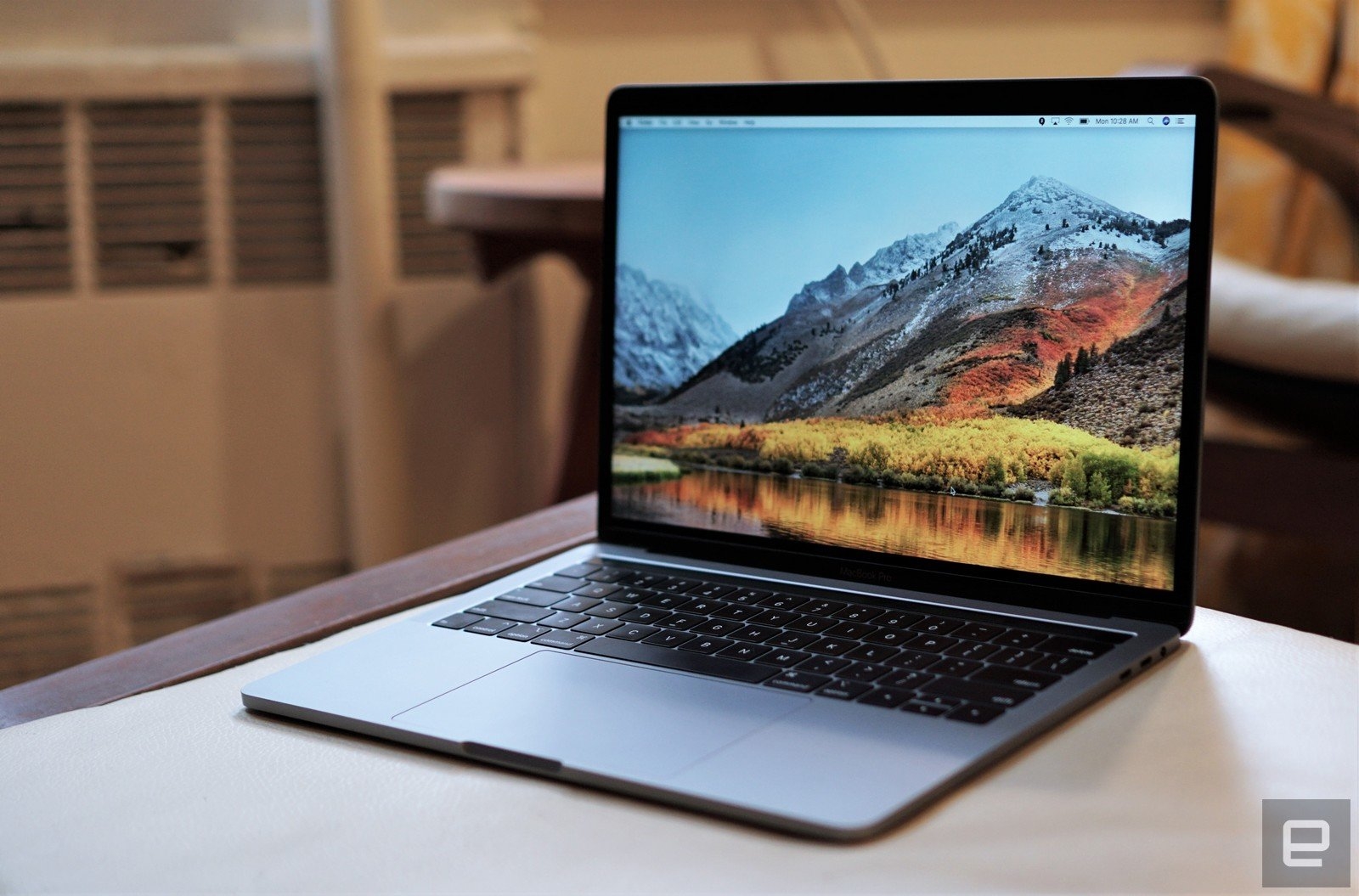With the new MacBook Pro, Apple is just trying to keep pace with the rest of the computing industry. The biggest upgrade is Intel’s latest CPUs, which have been popping up in PCs since last fall. And there are some other slight hardware tweaks, too. Basically, it’s a classic Apple refresh: Not much has changed. Put the MacBook Pro side by side with last year’s model and it’s impossible to tell the difference. Still, if you’re a committed Mac user, it’s exactly what you’ve been waiting for. Everyone else should take a long, hard look at the competition.
For me, this upgrade isn’t enough. I’ve never been a fan of Apple’s flat butterfly switch keys, since they have no depth. If Microsoft can squeeze a decent amount of key travel out of the Surface keyboard cover, Apple has no excuse. Instead, it seems more intent on trying to replicate the feeling of typing on an iOS virtual keyboard in the real world.
We tested the 13-inch MacBook Pro, which features Apple’s mainstay 2,560 x 1,600 Retina display. The resolution hasn’t changed over the past few years, but at least the display can finally take advantage of Apple’s True Tone technology, which made its debut on the iPad Pro, and which relies on an ambient light sensor to change the white balance of the screen and Touch Bar depending on your environment. That’s meant to make screens appear more natural, as if you were looking at a piece of white paper. Again, we’ve seen it on iOS devices before, and it’s helpful on the Mac in reducing screen fatigue.
In more disappointing news, since the MacBook Pro has the same case as before, we’re still stuck with four USB-C Thunderbolt 3 connections. At least that seems less egregious than it did two years ago. You won’t have to try too hard to find USB-C cables and accessories these days, but it would still be nice to have one traditional USB port and an SD card reader. That would be useful for creative workers who invested in expensive accessories and now have to lug around bundles of dongles. The Touch Bar is, well, the Touch Bar. It’s useful sometimes, but I still miss the reliability of physical function keys.

The biggest upgrades are under the hood: Apple is finally using Intel’s eighth-generation Core processors, which launched last year. The 13-inch model features quad-core i5 and i7 chips with Turbo Boost speeds up to 4.5GHz, while the 15-incher has six-core i7 and i9 processors that can reach 4.8GHz. The bigger model can also be configured with more elaborate hardware, including up to 32GB of RAM; a 4TB SSD; and dedicated Radeon Pro 560X graphics. In comparison, the 13-inch machine maxes out with 16GB of RAM; a 2TB SSD; and integrated Intel Iris Plus 655 graphics.
Finally, the laptops feature Apple’s T2 chip, which makes booting and file encryption more secure by bringing things like the audio and SSD controllers into a single location. It also lets you shout “Hey Siri” to a Mac for the first time. Voice commands work about as well as they do on the iPhone and iPad, but you’ll have to shout if you’re far from the computer. Unfortunately, Apple didn’t add any far-field microphones to make it easier to talk to Siri from far away. That’s a shame, since we’re seeing it on Windows laptops like the Dell XPS 13. Siri also isn’t very smart on Macs: If you have an iPhone nearby, she’ll pop up on both devices and get confused whenever you shout a voice command.
In use
You could call these new MacBook Pros Apple’s apology to prosumers. Sure, many of them would like their old ports back, or at least a card reader. But the sheer amount of power makes them appealing upgrades. And it’s about time: I’ve talked to plenty of Mac fans who were ready to jump ship to more versatile and capable Windows machines.
The easiest way to break down the MacBook Pro’s capabilities is with benchmarks. In Geekbench 4’s multi-core test, our Core i7 13-inch model scored a whopping 18,837, as compared with around 15,200 from similarly specced machines last year. According to Geekbench’s website comparisons, the MacBook Pro is almost 1,000 points faster than a 2013-era Mac Pro with a six-core Xeon processor. What all that really means is that if you’re doing CPU-heavy work like video and audio editing, or compiling tons of code, you’ll notice an improvement. (We plan to test the 15-inch MacBook Pro soon.)
Update: Apple announced a software fix for the CPU throttling issues on the new MacBook Pros after this review published. We’ve updated our review unit and haven’t noticed any benchmark differences.
| Laptop | Geekbench 4 CPU test (64-bit, single-/multi-core) | Xbench |
|---|---|---|
| MacBook Pro 2018 (13-inch, 2.3GHz-3.8GHz quad-core I7, 16GB RAM, Intel Iris Plus 655) | 5,356/18,837 | 699.53 |
| MacBook Pro 2016 (15-inch, 2.7GHz Core i7, 16GB RAM, 2GB Radeon Pro 455) | 4,309/13,367 | 558.81 |
| MacBook Pro 2016 (13-inch, 2.9GHz Core i5, 8GB RAM, Intel Iris Graphics 550) | 3,876/7,504 | 476.36 |
| MacBook Pro 2016 (13-inch, 2GHz Core i5, 8GB RAM, Intel Iris Graphics 540) | 3,756/7,268 | 473.65 |
Unfortunately, we didn’t have a Core i7-equipped MacBook Pro from last year to directly compare; just an i5 model. But we can still draw a few conclusions from the video conversion app HandBrake. When we tried to transcode a 15-second 4K clip with the software’s Super High Quality 1080p setting, the new MacBook Pro averaged an encoding speed of 7.5fps. Last year’s i5 model, on the other hand, clocked 4.6fps. And in Cinebench, a popular cross-platform benchmark, the new MacBook Pro reached a score of 600, while the older one clocked in at 379.
I was also surprised that I could play games decently on the new machine without lowering the screen resolution. Tacoma hovered between 30 and 35fps while playing at 2,560 by 1,600. You wouldn’t mistake the 13-inch MacBook Pro for a gaming laptop, but at least you have the option of dipping your toes into something fun.
| Surface Book 2 (15-inch) | 20:50 |
| Surface Laptop | 14:49 |
| Surface Pro | 13:40 |
| Apple MacBook Pro 2018 (13-inch, Touch Bar) | 12:25 |
| Apple MacBook Pro 2016 (13-inch, no Touch Bar) | 11:42 |
| Surface Book (Core i7, discrete graphics) | 11:31 / 3:02 (tablet only) |
| Apple MacBook Pro with Retina display (13-inch, 2015) | 11:23 |
| Apple MacBook Pro 2016 (15-inch) | 11:00 |
| Apple MacBook Pro 2016 (13-inch, Touch Bar) | 9:55 |
| Dell XPS 13 (2018) | 9:50 |
Another nice upgrade: Apple has rebounded with some decent battery performance. Our laptop lasted 12 hours and 25 minutes in our standard battery test, which involves looping an HD video until it dies. That’s a great jump forward from 2016, when it clocked just under 10 hours.
Pricing and the competition
The 13-inch MacBook Pro with the Touch Bar starts at $1,799 with a Core i5 processor, 8GB of RAM and a 256GB SSD. It’s worth bumping up your memory and storage, but it’ll cost you an additional $400 to snag 16GB of RAM and a 512GB SSD. If you’re looking for a good deal, though, and you don’t want the Touch Bar, there’s still the entry-level MacBook Pro at $1,299. The only problem is that it’s stuck with a paltry 8GB of RAM and a 128GB SSD.
Though it’s heavier, the 15-inch model is better suited to serious work. It starts at $2,399, but at least it gets you 16GB of RAM and dedicated Radeon 555X graphics. And if you’re dealing with complex audio and video editing, you’ll appreciate the larger screen. There’s also, finally, an external graphics option specifically designed for Macs: the $699 BlackMagic eGPU. It features AMD’s Radeon RX580, which will speed up video encoding and let you play a few games.
Outside of Apple devices, there are a ton of compelling PCs like Dell’s XPS lineup and HP’s Spectre. We’re also looking forward to ASUS’s ZenBook Pro, whose trackpad is actually a small touchscreen. That could just end up being a gimmick, but in theory it can do much more than the Touch Bar. If you’ve been a Mac loyalist for years, it’s worth taking a look to see what else is out there.
Wrap-up

While this latest generation of the MacBook Pro might seem understated, it’s a more significant upgrade than last year’s, when Apple just added some aging CPUs. These new models are more powerful than ever — though, if that’s your main concern, you should probably lean toward the 15-inch model.
But it’s also clear that Apple has been falling a bit behind the competition, which has been offering the same CPUs and better graphics for months. It’s clear that these machines are meant to appease Apple’s fans, not win over new ones.
(70)

